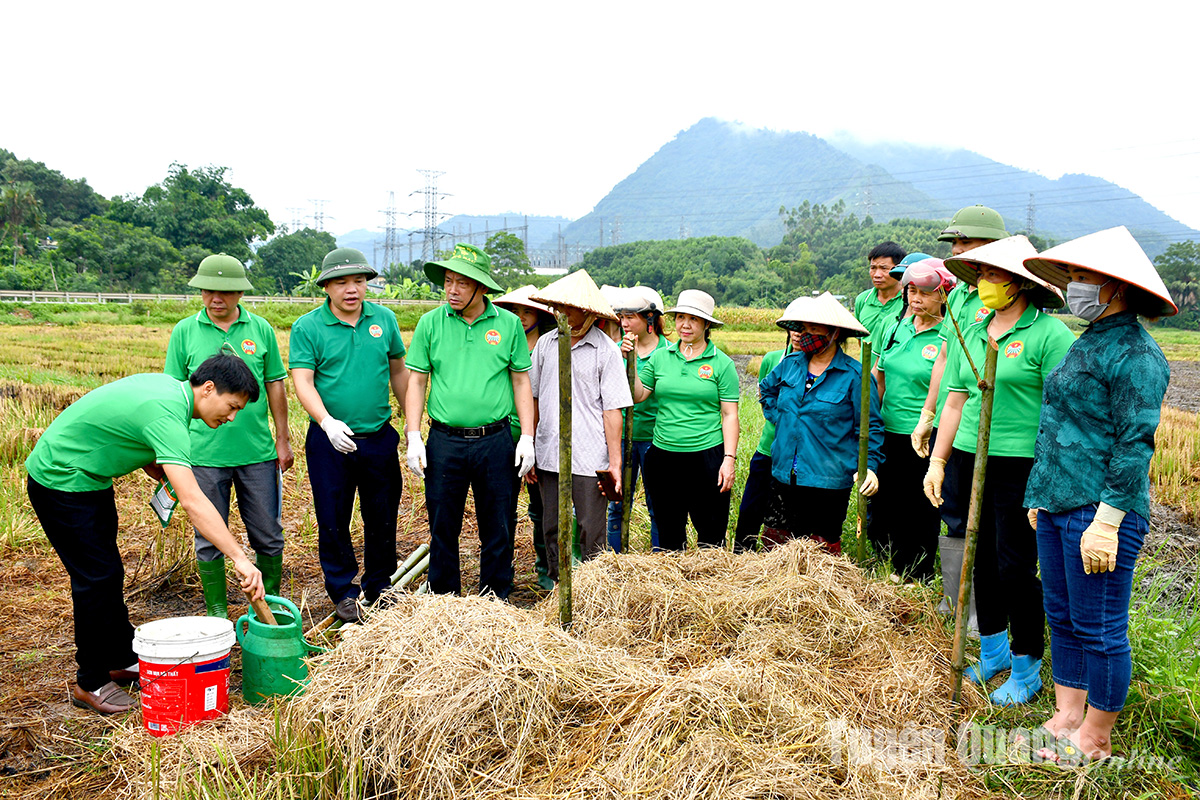
The project's goal is to turn organic waste into a valuable resource; increase farmers' income from organic waste resources; reduce greenhouse gas emissions in agricultural production and from leftover food; improve soil health and enhance livestock health; protect the environment; improve community health.
The project is implemented in accordance with the Party and State's policies and guidelines on proactively responding to climate change; strengthening resource management and environmental protection. Implementing the Project, Farmers' Associations at all levels have built more than 8,000 environmentally friendly waste treatment models. Of which, nearly 2,000 models of fermenting crop by-products to make animal feed; more than 2,000 models of composting organic fertilizer from crop by-products in the fields and treating stubble with Trichoderma; nearly 1,400 models of raising chickens on thick biological bedding; more than 1,300 models of raising calcium worms; more than 1,300 models of raising earthworms. Tuyen Quang was selected by the Central Committee of the Vietnam Farmers' Association as one of 15 provinces to implement the Project. The Provincial Farmers' Association has implemented the project in 9 communes of Yen Son, Chiem Hoa districts and Tuyen Quang City. The project has built 6 application techniques in treating agricultural by-products: fermentation techniques of crop by-products to make animal feed; chicken raising techniques on thick biological bedding; composting techniques of organic fertilizer from crop by-products; techniques for treating stubble in the field; techniques for raising calcium worms; techniques for raising earthworms. Currently, these techniques have been widely developed throughout the province and have been effectively applied by many farmers. Through this activity, farmers and people will understand the techniques for treating by-products in agricultural production, implement and apply them in the field; build a model of "Clean fields, clean production", contributing to environmental protection, reducing costs, and improving the efficiency of agricultural production.

Comment
Print